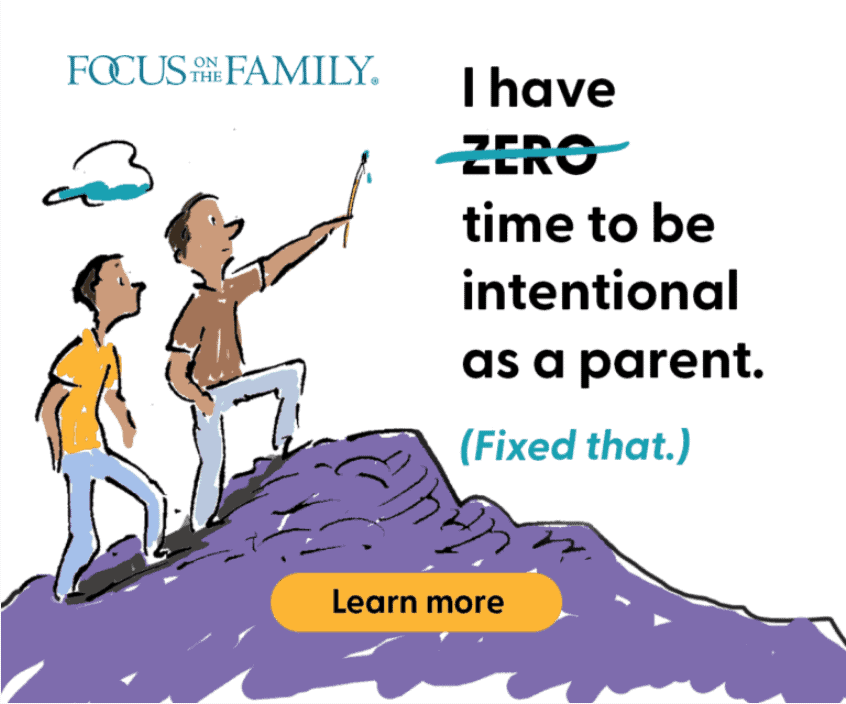In This Series:
-
1. Covenant: The Heart of the Marriage Mystery
-
2. Reflecting Our Relationship With God
-
3. God’s Design for Marriage
- 4. Why Marriage Matters for Adults
Researchers are finding that marriage has a much greater impact in our lives than many have assumed. This is especially true in the area of adult health and well-being.
Sociologist Linda Waite and researcher Maggie Gallagher explain,”The evidence from four decades of research is surprisingly clear: a good marriage is both men’s and women’s best bet for living a long and healthy life.” (Linda J. Waite and Maggie Gallagher, The Case for Marriage: Why Married People are Happier, Healthier, and Better Off Financially, (New York Doubleday, 2000), p. 64.)
Men and women who are in their first marriages, on average, enjoy significantly higher levels of physical and mental health than those who are either single, divorced or living together. The research on this is very strong.
Leading social scientist, James Q. Wilson, explains: “Married people are happier than unmarried ones of the same age, not only in the United States, but in at least seventeen other countries where similar inquiries have been made. And there seems to be good reasons for that happiness. People who are married not only have higher incomes and enjoy greater emotional support, they tend to be healthier. Married people live longer than unmarried ones, not only in the United States but abroad.” (James Q. Wilson, The Marriage Problem: How Our Culture Has Weakened Families (New York: Harper Collins, 2002), p. 16.)
Research conducted at the University of Massachusetts concludes,”One of the most consistent observations in health research is that the married enjoy better health than those of other [relational] statuses.” (Katherine Reissman and Naomi Gerstel, “Marital Dissolution and Health: Do Males or Females Have Greater Risk?” Social Science and Medicine 20 (1985): 627-635.)
Dr. Robert Coombs of UCLA reviewed more than 130 empirical studies published in this century on how marriage impacts well-being. He found that these studies indicate “an intimate link between marital status and personal well-being.” (Robert Coombs, “Marital Status and Personal Well-Being: A Literature Review,” Family Relations 40 (1991) 97-102.)
Alcoholism
Coombs, in his review, found that 70 percent of chronic problem drinkers were either divorced or separated, and only 15 percent were married. Single men are more than three times as likely to die of cirrhosis of the liver. (Coombs, 1991, p. 97.)
Long and Healthy Life
Unmarried people spend twice as much time as patients in hospitals as their married peers and have lower activity levels. (Lois Verbrugge and Donald Balaban, “Patterns of Change, Disability and Well-Being,” Medical Care 27 (1989): S128-S147.)
Research conducted at Erasmus University in Rotterdam reports that “married people have the lowest morbidity [illness] rates, while the divorced show the highest.” Professor Linda Waite of the University of Chicago finds that the “relationship between marriage and death rates has now reached the status of a truism, having been observed across numerous societies and among various social and demographic groups.” (I.M. Joung, et al., “Differences in Self-Reported Morbidity by Marital Status and by Living Arrangement,” International Journal of Epidemiology 23 (1994): 91-97.)
In Waites’ 1995 presidential address to the Population Association of America, she explained that the health benefits of marriage are so strong that a married man with heart disease can be expected to live, on average, 1400 days longer (nearly four years!) than an unmarried man with a healthy heart. This longer life expectancy is even greater for a married man who has cancer or is 20 pounds overweight compared to his healthy, but unmarried, counterpart. The advantages for women are similar. (Linda J. Waite, “Does Marriage Matter?” Presidential Address to the American Population Association of America, April 8, 1995; Linda Waite, “Does Marriage Matter?” Demography 32 (1995): 483-507.)
Additional research from Yale University indicates that a married man who smokes more than a pack a day can be expected to live as long as a divorced man who does not smoke. This researcher explains with a touch of humor, “If a man’s marriage is driving him to heavy smoking, he has a delicate statistical decision to make.” (Harold Morowitz, “Hiding in the Hammond Report,” Hospital Practice (August 1975), p. 39.)
Dr. Coombs’ research agrees with these findings: “Virtually every study of mortality and marital status shows the unmarried of both sexes have higher death rates, whether by accident, disease, or self-inflicted wounds, and this is found in every country that maintains accurate health statistics.” (Coombs, 1991, p. 98.)
Research published in JAMA finds that cures for cancer are significantly more successful (eight to 17 percent) when a patient is married and being married was comparable to being in an age category 10 years younger. (James Goodwin, et al., “The Effect of Marital Status on Stage, Treatment, and Survival of Cancer Patients,” Journal of the American Medical Association, 258 (1987): 3152-3130.)
Mental Health
Research dating back to 1936 shows that first-time psychiatric admission rates for males suffering from schizophrenia were 5.4 times greater for unmarried men than for married men. Dr. Benjamin Malzberg, the author of this study, concludes, “The evidence seems clear that the married population had, in general, much lower rates of mental disease than any of the other marital groups.” (Benjamin Malzberg, “Marital Status in Relation to the Prevalence of Mental Disease,” Psychiatric Quarterly 10 (1936): 245-261.)
More recent research conducted jointly at Yale University and UCLA reports: “One of the most consistent findings in psychiatric epidemiology is that married persons enjoy better health than the unmarried. Researchers have consistently found the highest rates of mental disorder among the divorced and separated, the lowest rates among the married and intermediate rates among the single and widowed. They also found that a cohabiting partner could not replicate these benefits of marriage.” (David Williams, et al., “Marital Status and Psychiatric Disorders Among Blacks and Whites,” Journal of Health and Social Behavior 33 (1992): 140-157.)
General Happiness
A study published in the Journal of Marriage and the Family examined the link between personal happiness and marital status in 17 industrialized nations that had “diverse social and institutional frameworks.” This study found: “married persons have a significantly higher level of happiness than persons who are not married. This effect was independent of financial and heath-oriented protections offered by marriage and was also independent of other control variables including ones for sociodemographic conditions and national character.” (Steven Stack and J. Ross Eshleman, “Marital Status and Happiness: A 17-Nation Study,” Journal of Marriage and the Family, 60 (1998): 527-536.) Increased levels of happiness among the married was found in other studies as well. (Coombs, 1991, p. 100.)
Additional research shows that marriage:
- Provides the highest levels of sexual pleasure and fulfillment for men and women. (Robert T. Michael, et al., Sex in America: A Definitive Survey, (Boston: Little, Brown, and Company, 1994), p. 124-129; Edward O. Laumann, et al., The Social Organization of Sexuality: Sexual Practices in the United States (Chicago: University of Chicago Press, 1994), p. 364, table 10.5; Andrew Greeley, Faithful Attraction: Discovering Intimacy, Love and Fidelity in American Marriage, (New York: Tom Doherty Association, 1991), see chapter 6.)
- Protects against feelings of loneliness. (Randy Page and Galen Cole, “Demographic Predictors of Self-Reported Loneliness in Adults,” Psychological Reports 68 (1991): 939-945.)
- Protects women from domestic and general violence. (Jan Stets, “Cohabiting and Marital Aggression: The Role of Social Isolation,” Journal of Marriage and the Family 53 (1991): 669-680; Criminal Victimization in the United States, 1992,” U.S. Department of Justice, Office of Justice Programs, Bureau of Justice Statistics, (March 1994), p. 31, NCJ-145125.)
- Enhances a parent’s ability to parent. (Ronald Angel and Jacqueline Angel, Painful Inheritance: Health and the New Generation of Fatherless Families (Madison: The University of Wisconsin Press, 1993), pp. 139, 148.)
- Helps create better, more reliable employees. (Janet Wilmoth and Gregor Koso, “Does Marital History Matter? Marital Status and Wealth Outcomes Among Pre-retirement Adults,” Journal of Marriage and Family, 64 (2002): 743-754.)
- Increases individual earnings and savings. (Waite, 1995, p. 483-507; Waite and Gallagher, 2000, see chapter 8; Wilmoth and Koso, 2002, p. 743-754.)
Research conducted at the University of Colorado indicates why marriage is so beneficial to adults: “Generally, compared with those who are not married, married individuals eat better, take better care of themselves, and live a more stable, secure and scheduled lifestyle.” (Richard Rogers, “Marriage, Sex, and Mortality,” Journal of Marriage and the Family 57 (1995): 515-526.)
Clearly, married men and women provide better things for society than their unmarried peers. Husbands and wives are not as likely to be a burden to the health care system or be a drain on a company’s health insurance benefits because of their better health and increased ability to recover from illness quicker and more successfully. They are less likely to miss work because of illness. They are not likely to jump from job to job. They are less likely to suffer from alcoholism and other substance abuse and less likely to engage in other risky behaviors. Married women are significantly less likely to be victims of any kind of violence, either by her spouse or by a stranger. They are less lonely and happier. Happier people make better citizens, employees and neighbors. Married people earn and invest more money. They report enjoying the job of parenting better and they are more successful at it. This mountain of social science research tells us marriage is a serious and valuable community treasure.





















